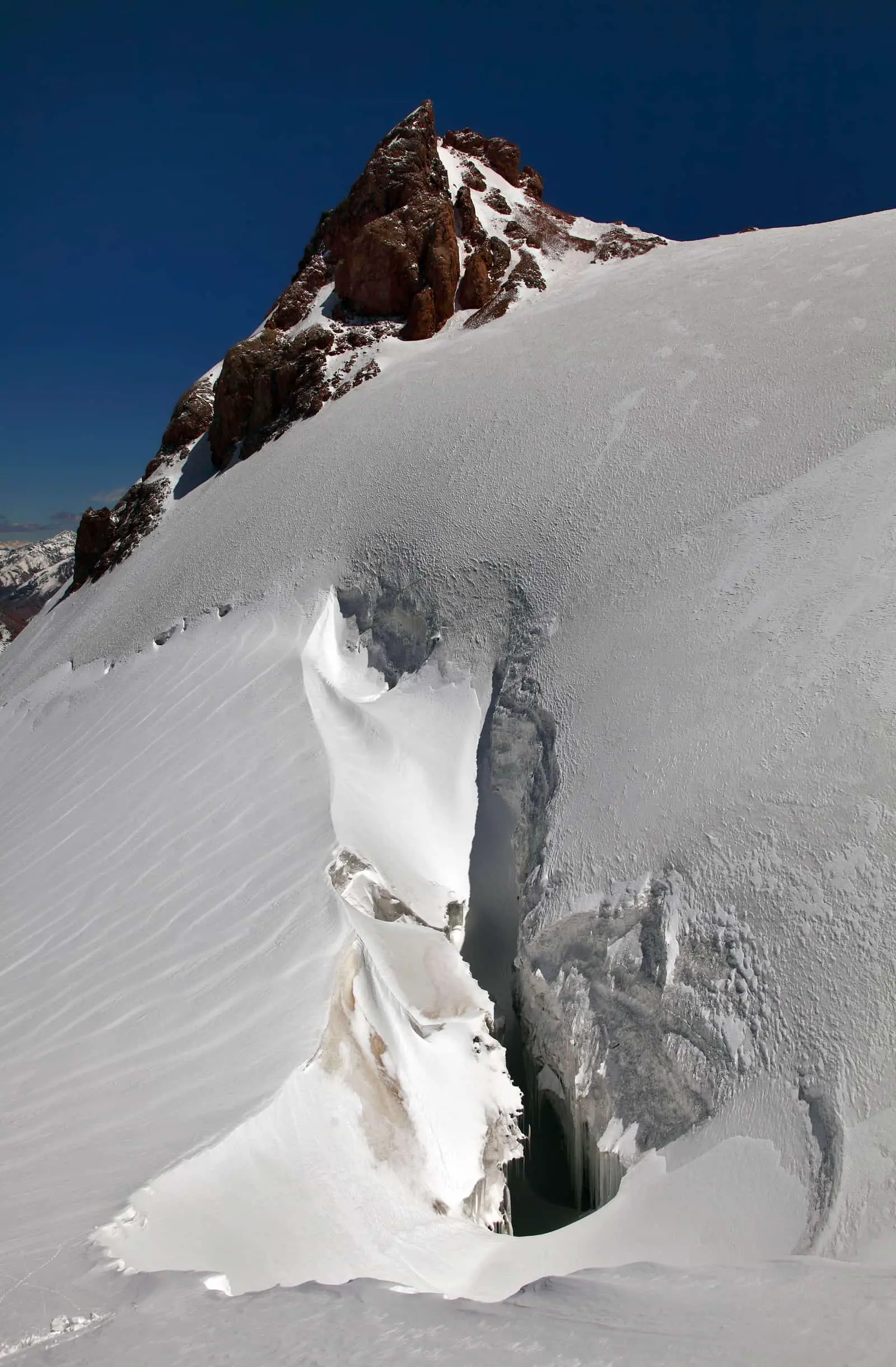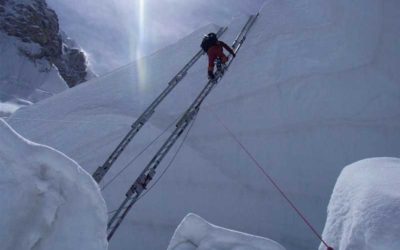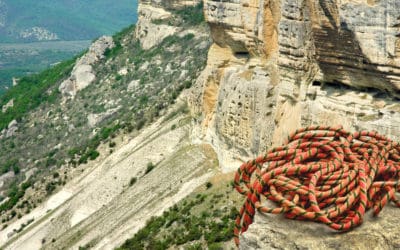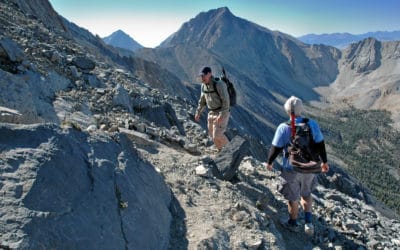
Trekking over glaciers is an incredible experience that brings you closer to the stark beauty of nature. Staring into the blue abyss of a crevasse is indescribable. It’s terrifying, breathtakingly beautiful, and awe-inspiring.
It’s also insanely dangerous – even fatal – when things go wrong.
Falling down a crevasse is one of the most dangerous things that can happen in the mountains, right up there with frostbite and hypothermia.
So, how do you spot a crevasse and – more importantly – avoid falling into one? In this article, I will have a look at what crevasses are and how to detect them in time.
Spotting a Crevasse
Falling down a crevasse is unpleasant at best, fatal at worst. It is best to avoid them altogether. Unfortunately, if you choose to trek across a glacier, you will undoubtedly encounter some crevasses.
Learning how to spot them is the first step to safety.
Other skills you definitely need are crevasse crossing and crevasse rescue – there are covered in other articles.
3 Ways to spot a Crevasse
There are three important lessons to remember that will help you spot a crevasse:
- Crevasses cause shadows in the ice. If a glacier has only a thin layer of snow, or no snow, you can usually see these shadows.
- When snow is driven by wind, it will also land differently along the edge of a gorge. Looking out for this change in shape will help you spot the crevasse.
- Crevasses are often covered by a thin layer of ice or snow. Poking the ice or snow in front of you with an ice ax or pole with a sharp point might break the ice, exposing the chasm.
Now that you know where it is, you can trek around or follow safety best practices to cross it.
Know Where to Expect Them
Knowing where to expect crevasses is half the job. Avoid those areas if possible. If you can’t avoid it, go carefully.
Here are four key facts that determine where a crevasse may appear:
- Steep slopes are prone to crevasse formation. Fissures in these areas are also generally deeper and closer together than in flatter areas.
- While crevasses are territory specific, they don’t stay put in that area, unfortunately.
- They move around with the rest of the ice, so you can’t map them out for next season, or even next week.
- New ones are continually forming, and old ones change shape and size, messing with your careful planning.
If you have never seen what a crevasse looks like from the inside this may be helpful. Here is a video showing someone falling down a crevasse:
What is a Crevasse?
Crevasses are found in glaciers. These are, in turn, formed by layers of unmelted snow laid down over many consecutive years. The snow turns to ice as it gets compacted by the weight of subsequent layers, forming the glorious glaciers that we know and love.
Glaciers are constantly moving. Think of them as a frozen river. As they move, they encounter rocks and other obstacles, exerting pressure on the ice. Here, the ice deforms and eventually splits open, forming a crevasse or fissure. These can range from a few millimeters across to meters and will also vary in length and depth.
Crevasses are beautiful, but incredibly dangerous. They’re usually hidden from view under a fresh coating of snow or a thin layer of ice, so they’re hard to spot.
Types of Crevasses
How a crevasse forms is affected by the terrain and the movement of the glacier.
Transverse
These fissures are orientated perpendicular to the long axis of a glacier. You would generally find them in a glacier situated in a valley near steep terrain, such as above an icefall. The icefall would add an extra element of danger to your trek.
Longitudinal
Longitudinal crevasses usually open parallel to the long axis of a glacier. Typically, you will find them in an area where the glacier gets wider.
En-Echelon
En-echelon crevasses are at an odd angle near the glacier margin and are formed due to rotational strain. Here, the glacier’s velocity differs from the speed of the ice at the edge of the glacier.
Bergschrund
Bergschrund is German for “mountain cleft.” Here, the moving part of the glacier breaks off from the stagnant portion, forming a fissure.
Conclusion
Spotting crevasses is not an exact science. It’s dangerous, and you can easily miss one, finding it only when you fall into it.
When you undertake glacier trekking, always stick to safe practices, like not traveling alone, being roped up, and maintaining a safe distance between team members.
Adhering to best practices will help you minimize the damage caused to the ice when you punch through the ice covering a crevasse. Timing your trek according to the seasons is also a good idea. Here, snow bridges will be at their best, giving you the safest possible passage.
Traveling during the coldest part of the day (in the morning usually) would ensure that the ice is frozen solid and thus able to bear more weight.
We trust that you found this article helpful in spotting crevasses and making your trek safer. Happy climbing!
Written by Felix

About me
Hi! I’m Felix. When I’m not spending time out in the mountains, I like to write about my hobbies. That is how Mountain Homies was created. On this site, I try to gather all the juicy information about Mountaineering that I have learned since I started. Happy adventures!
Related Articles
3 Clever Ways of Crossing A Crevasse
When you’re mountaineering in snow country, you will undoubtedly encounter some crevasses. These are scary, since you don’t always spot them…
Mountain Climbing vs Rock Climbing: 5 Biggest Differences
The key differences between rock climbing and mountain climbing are the gear requirements, environmental risk, geographical locations, weather and…
Hiking in Mountaineering Boots: Is It Really a Good Idea?
In short, hiking Boots are specifically made for walking, mountaineering boots are multi-purpose. Hiking can be done in most mountaineering boots, but for long hikes…



